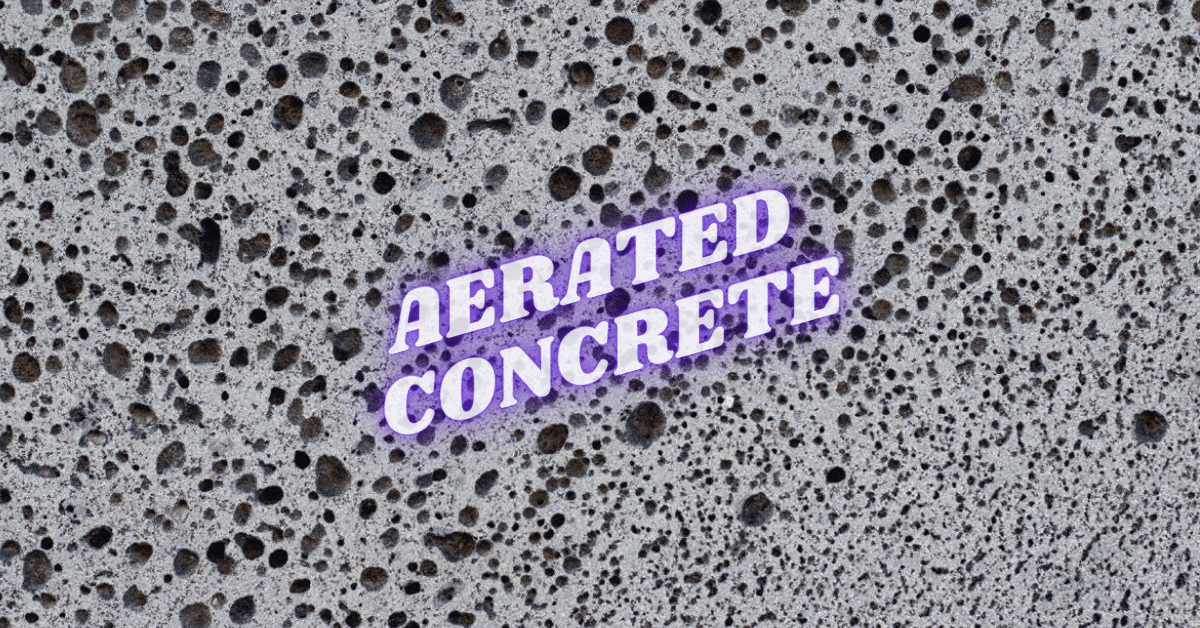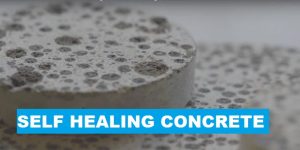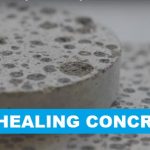The aerated lightweight concrete is a fully mature technology. It is a dynamic, single component building material system that is a mixture of Portland cement, sand, aluminium powder, and water. In the early 1920’s Dr. Axel Eriksson an Assistant Professor for Building Techniques at the Royal Institute in Stockholm, discovered that by adding aluminium powder to cement, water, and finely ground sand caused the mixture to expand dramatically.
Density of Aerated Lightweight Concrete
Aerated concrete is a material with good mechanical strength, together with a high insulation value over a wide range of densities. The density of aerated concrete is influenced by the water cementitious ratio, because the amount of aeration depends on the water cementitious ratio.
However, when pozzolans is used, water solids ratio is more important than water cementitious ratio. In determining the water solid ratio sand also will be included. For gas formed concrete, a lesser water-solids ratio would lead to insufficient aeration, while a higher water solid ratio will result in rupture of the voids.
Therefore, in both conditions, some increase can be expected in density. According to Neville (1973), aerated concrete can be produced in any required density depending on the intended compressive strength. This is because the density directly related to the gas forming admixtures (aluminium powder) while the compressive strength increases/decreases linearly with the density.
Compressive Strength of Aerated Concrete
Compressive strength is one of the most important characteristics of concrete. It has been used as a yardstick to determine the quality of concrete, and this is not an exceptional for aerated concrete.
The specimen size and shape, method of pore-formation, direction of loading, age, water content, characteristics of raw material, and method of curing have been reported to influence the strength of aerated concrete. Pore structures of the air pores and mechanical condition of pore shells have marked influence on the compressive strength of aerated concrete.
The strength of non-autoclaved increases 30 to 80 percent between 28 days and 6 months, but only marginally beyond this period. A portion of this increase is attributed to the process of carbonation.
Compressive strength varies inversely with moisture content, and this could be due to the water held in the pore structure acting as a lubricant in the microstructure of the material. On drying to equilibrium with normal atmosphere, there is an increase in strength and an even larger increase on complete drying out.
Drying Shrinkage of Hardened Concrete
Drying shrinkage plays an important role on influencing the structural properties of the concrete elements. Drying shrinkage occurs due to the loss of adsorbed water from the material and is significant in aerated concrete because of its high porosity (40 – 80%) and specific surface of pores (around 30 m2/g).
Therefore, it accelerates the drying of water in aerated concrete. Besides that, decrease in pore sizes, along with a higher percentage of smaller size pores is reported to increase shrinkage. According to Nielson (1983) shrinkage is related compression due to hydraulic vacuum in the pore water.
While the capillary tension theory of drying shrinkage of porous building materials states that the water in the pore exits in tension and this creates an attractive force between the pore walls.
Drying Shrinkage of aerated concrete with only cement as the binder is reported to be more significantly higher than that produced with lime or lime-cement. Besides that, the duration and method of curing, pressure of autoclaving, fineness and chemical composition of mineral admixture, the size and shape of specimen affects the drying shrinkage.
Dry curing has greater influence on the shrinkage compared with water curing and it is due to high level of moisture loss. Usually the final value of shrinkage depends on the initial and final moisture content. ASTM C928/C928M-20 (Standard Specification for Packaged, Dry, Rapid-Hardening Cementitious Materials for Concrete Repairs), indicates that the drying shrinkage or expansion of a specimen should not exceed + 0.15% of their initial length.
If higher shrinkage or expansion occurs, the overall length and height of the wall would be affected. The drying shrinkage, in most cases, increases if the relative humidity decreases. In the range of higher moisture content, a relatively small shrinkage occurs with loss of moisture, which can be attributed to the presence of a greater number of large pores, which do not contribute to shrinkage.
Water Absorption of Aerated Concrete
Water absorption in aerated concrete is also an important property. Since aerated concrete is porous, there is a strong interaction between water, water vapor and the porous system and there exits various moisture transport mechanism.
In the dry state, pores are empty, and the water vapor diffusion dominates, while some pores are filled in higher humidity regions. These mechanisms make it difficult to predict the influence of pore size distribution and water content on moisture movement. The water vapor transfer is explained in terms of water vapor permeability and moisture diffusion coefficient.
The moisture transport phenomena in porous material, by absorbing and transmitting water capillarity, has been defined by an easily measurable property called the sorptivity, which is based on unsaturated flow theory. It has been shown that the water transmission property is better explained by sorptivity than by permeability.
Fire Resistance Properties of Aerated Concrete
Theoretically the most remarkable properties of aerated concrete are its fire resistance capability. The most important reason for such behavior is that the material is relatively homogeneous, unlike normal concrete where the presence of coarse aggregate leads to differential rates of expansion, cracking and disintegration.
Besides that, it will not spall during fire and it also does not require plastering to achieve good fire resistance. The good fire resisting property of aerated concrete is where its closed pore structure provides for, heat transfer through radiation is an inverse function of the number of air-solid interfaces traversed.
Adding this to their low thermal conductivity and diffusivity gives an indication that aerated concrete possesses good fire resisting properties. However, continuous heat would affect the compressive strength and shrinkage of the concrete. The changes are due to loss of chemically bound water being released from the concrete because of continuous heat.
Workability Behaviour
Another main advantage of aerated concrete is the ease with which it may be sawn, cut, drilled, and nailed. Drilling holes for services is carried out with simple wood working tools.
Neat holes can be easily made and most of the damages can be avoided. Fixing of the panels or blocks can be directly nailed, screwed, or also by using special plaster.
However, during the wet conditions, the concrete mix in mould should not be moved or vibrated at all. This would cause incomplete aeration process, by bursting of air bubbles, and the mix will tend settle in the mould, without resulting enough expansion.
Cost Effectiveness
Cost reduction has been a great factor in any construction projects. So, for that reason, aerated concrete can be the solution. Generally, 10 to 20 percent of the material cost can be saved compared to normal dense concrete.
Based on a real-time experimental cost benefit analysis, a condominium project was used to calculate the cost saving by using aerated concrete. Based on the initial design using traditional concrete, the overall cost of the project was estimated at 21 million USD.
However, with revised design using aerated concrete wherever possible, the overall cost was brought down by more than 10% from the original cost. Besides that, an ongoing savings of US$40,000.00 per year was accomplished due to a reduction of electricity costs due to lower air-conditioning requirements.
Final Notes
We have covered most of the important engineering and behavioural properties of aerated lightweight concrete. These are general properties that we also usually discuss for any type concrete material. Having a good understanding on these properties could make it easier for you when it comes down to selecting and using this material for your projects.










